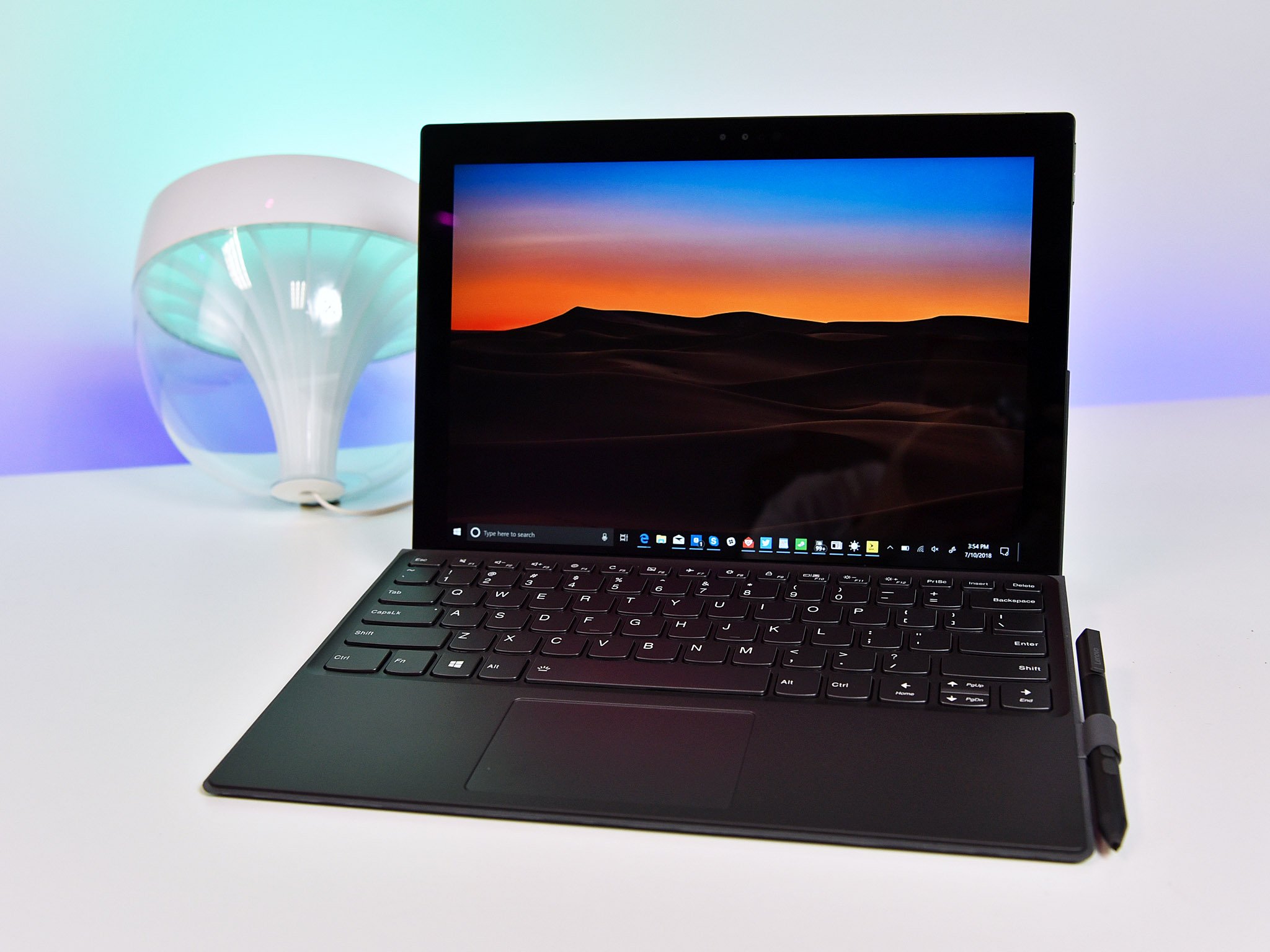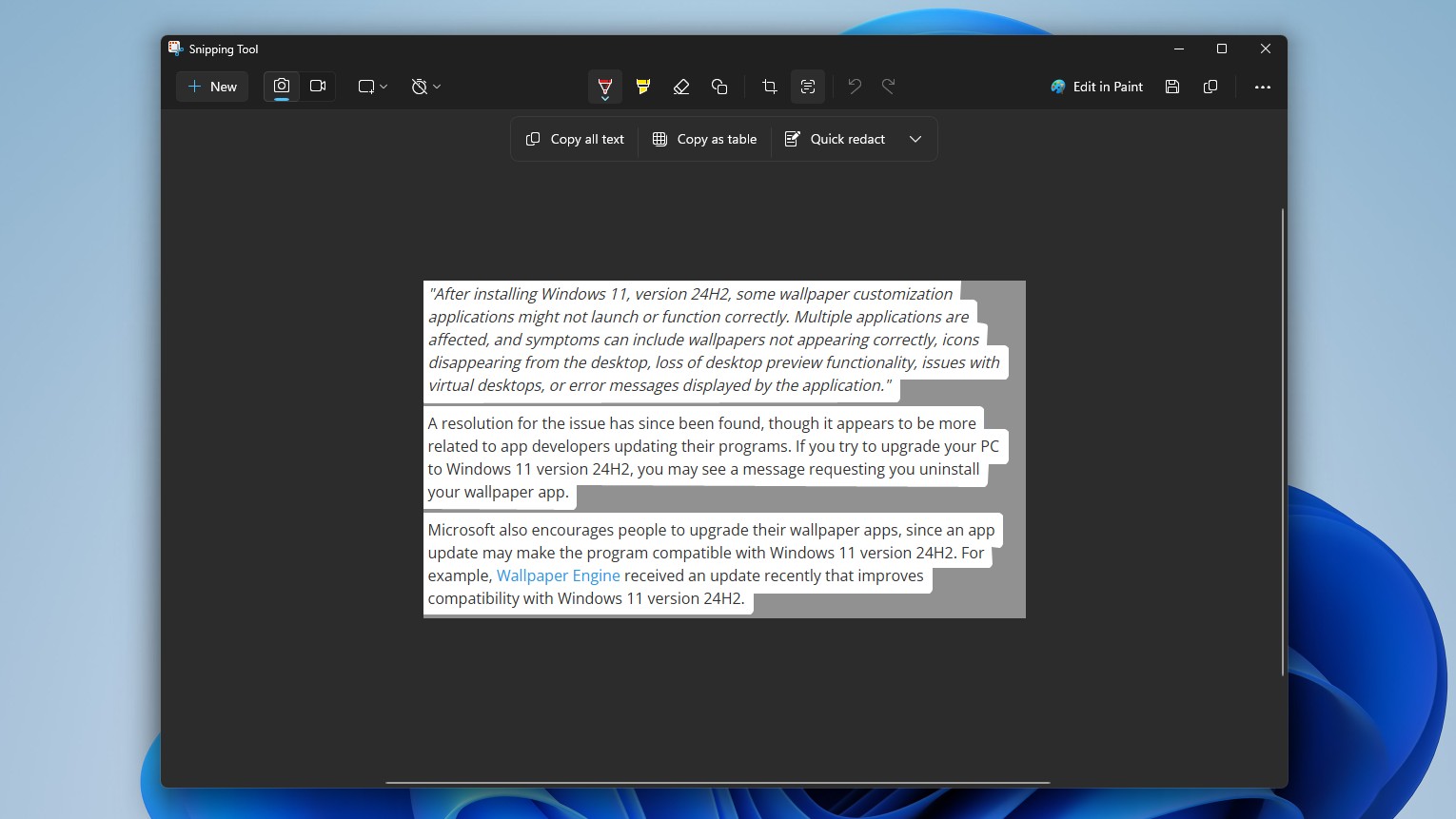So far, HP has had the ARM PC market for tablets with keyboards all to itself, but Lenovo recently soft-launched its Miix 630 with a Qualcomm Snapdragon 835 (the Snapdragon 850 is not expected until the end of 2018).
On the first pass, the Miix 630 strikes a strong resemblance to the HP Envy x2, but that's not due to copying, but rather both are based off Qualcomm's reference design for such an ideal Snapdragon-powered Windows tablet. That's a good thing as it's a winning composition (certainly better than HP's attempt at an Intel version).
How does the Lenovo's Miix 630 compare to the HP Envy x2 and is this a worthy Windows 10 on ARM device? Check out my latest video review to find out.
Lenovo Miix 630 specifications
For all intents and purposes, the Miix 630 and Envy x2 are the same. But each company has added its personal touch to make it unique.
Lenovo, for its part, differs from HP's attempt in a few ways:
- Dual infrared (IR) lenses for Windows Hello (versus one).
- Speakers are sideward facing (not the front).
- Jet black (iron grey) vs. silver.
- About a half pound heavier.
- Magnets to keep the keyboard closed.
- Shared SIM + Micro SD slot.
- Faster eUFS 2.1 storage by Samsung.
- Keyboard has two-stage backlighting (instead of one).
- Includes eSIM in the box with free 1GB of data.
Other than those differences, the Mixx 630 and Envy x2 are the same. Similar display, same great audio quality, Precision touchpad, the same amount of RAM and storage size, etc.
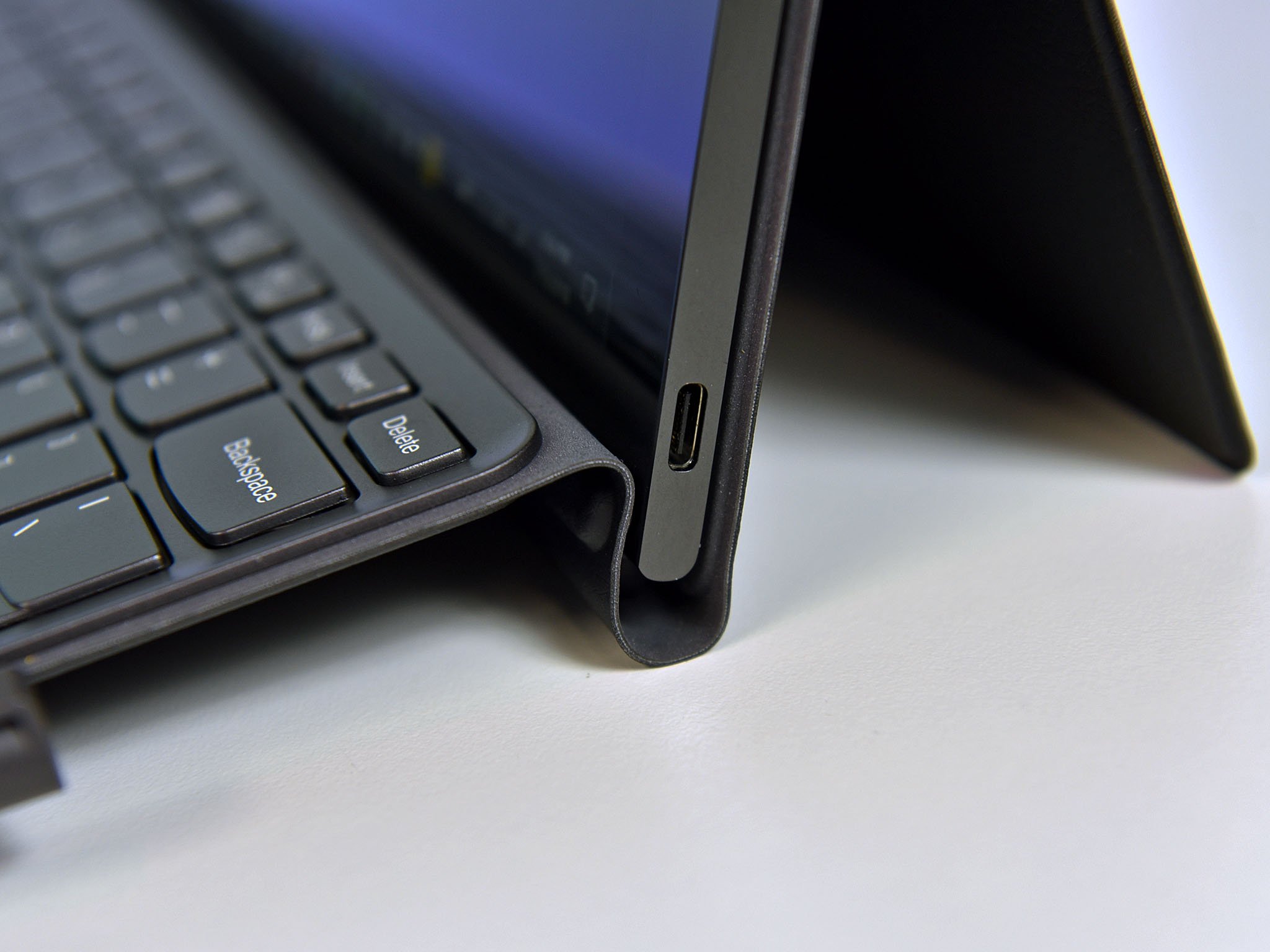
Perhaps the biggest difference between the two is storage. Lenovo is using Samsung eUFS (~700 MB/s) for that 128GB of drive space, and it boasts about 200 MB/s faster read time over what HP is using. Normally, that's not a huge deal, but where performance is already somewhat compromised with the Snapdragon 835 every bit of power here counts.
| Category | Lenovo Miix 630 (ARM) |
|---|---|
| Processor | Qualcomm Snapdragon 835 |
| Memory | 4GB DDR4 |
| Storage | 128GB eUFS 2.1 (Samsung) |
| Graphics | Adreno 540 |
| Display | 12.3-inch FHD+ (1920 X 1280)Corning Gorilla Glass400 nits |
| Keyboard | Backlit, Precision Touchpad |
| Material | Metal |
| Camera | 5MP front-facing13MP rear world-facing |
| Stylus | Lenovo Active Pen (included) |
| Wireless | Qualcomm WCN3990 802.11ac (2x2) Bluetooth 4.1 |
| Ports | USB-C x 1 (Gen 1, DisplayPort 1.3 Power Delivery), headphone/mic, dual SIM/Micro SD tray |
| Security | Windows Hello facial recognition (dual IR) |
| Battery | 48 WHr |
| Weight | Tablet: 1.7lbs (770g)With KB: 3.1lbs (1.39 kg) |
| Dimensions (W x D x H) | W/o keyboard: 8.23" x 11.54" x 0.29" / 210 x 293 x 7.3 (mm) |
| Price | $899 ($799 on sale) |
Lenovo is also great about including an actual eSIM in the device. Out of the box, users can connect to Lenovo's Connect system and nab 1GB of free LTE data for one month. Afterward, users can buy more data.
Sprint in the US is also running a great deal with free LTE data through 2018 when you buy from Microsoft or Amazon.
Lenovo Mixx 630 fit and feel
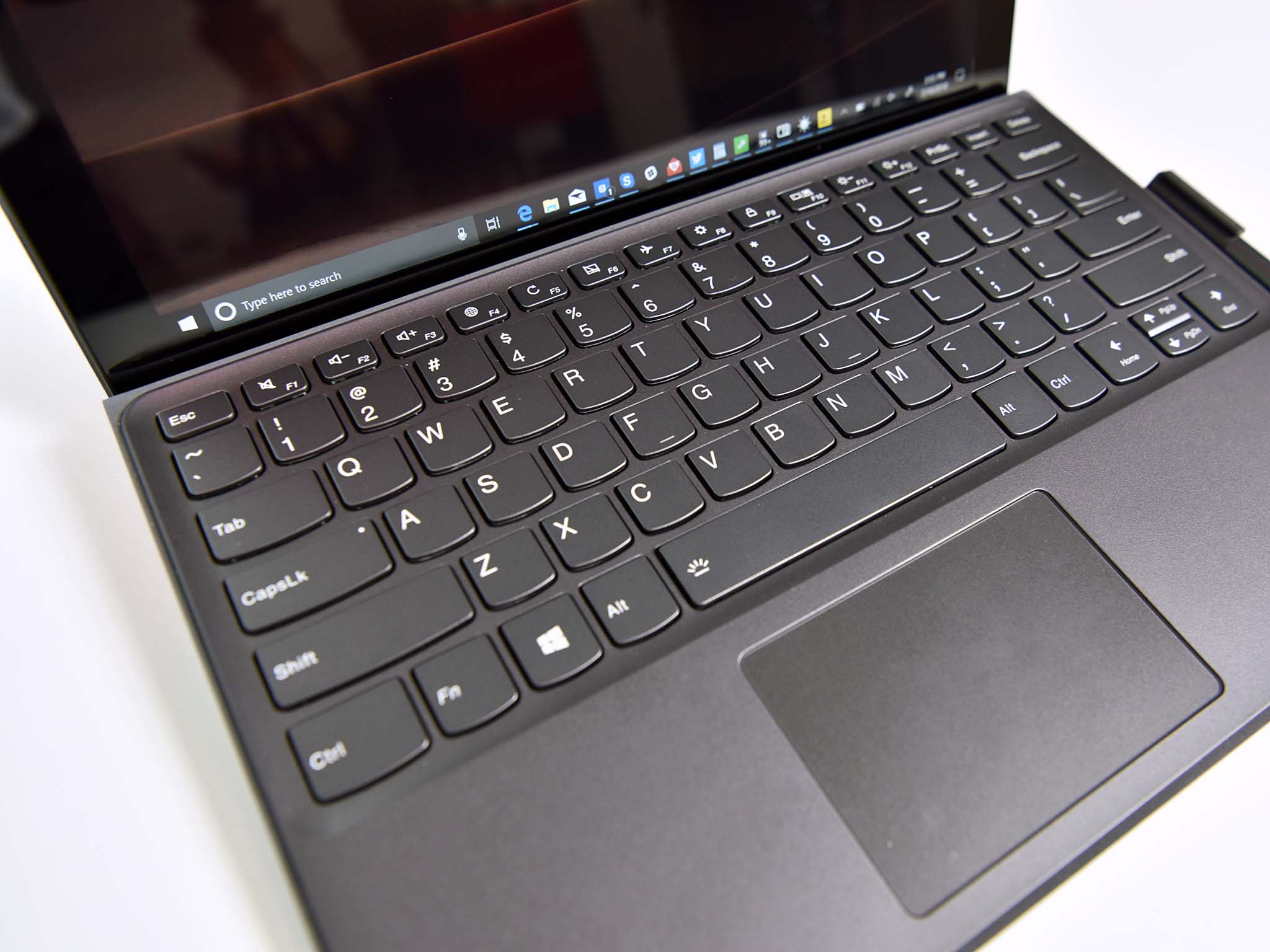
Lenovo's take on the Mixx 630 is slightly heavier – about 0.5 lbs – over HP's more rounded and slightly thinner attempt (6.9mm versus 7.3mm).
The Miix 630 though is solid with a nice, evenly distributed weight and machined edges that you only find on high-end premium devices. It looks sharp too being jet black all around – even the hinge on the keyboard omits any silver hues.
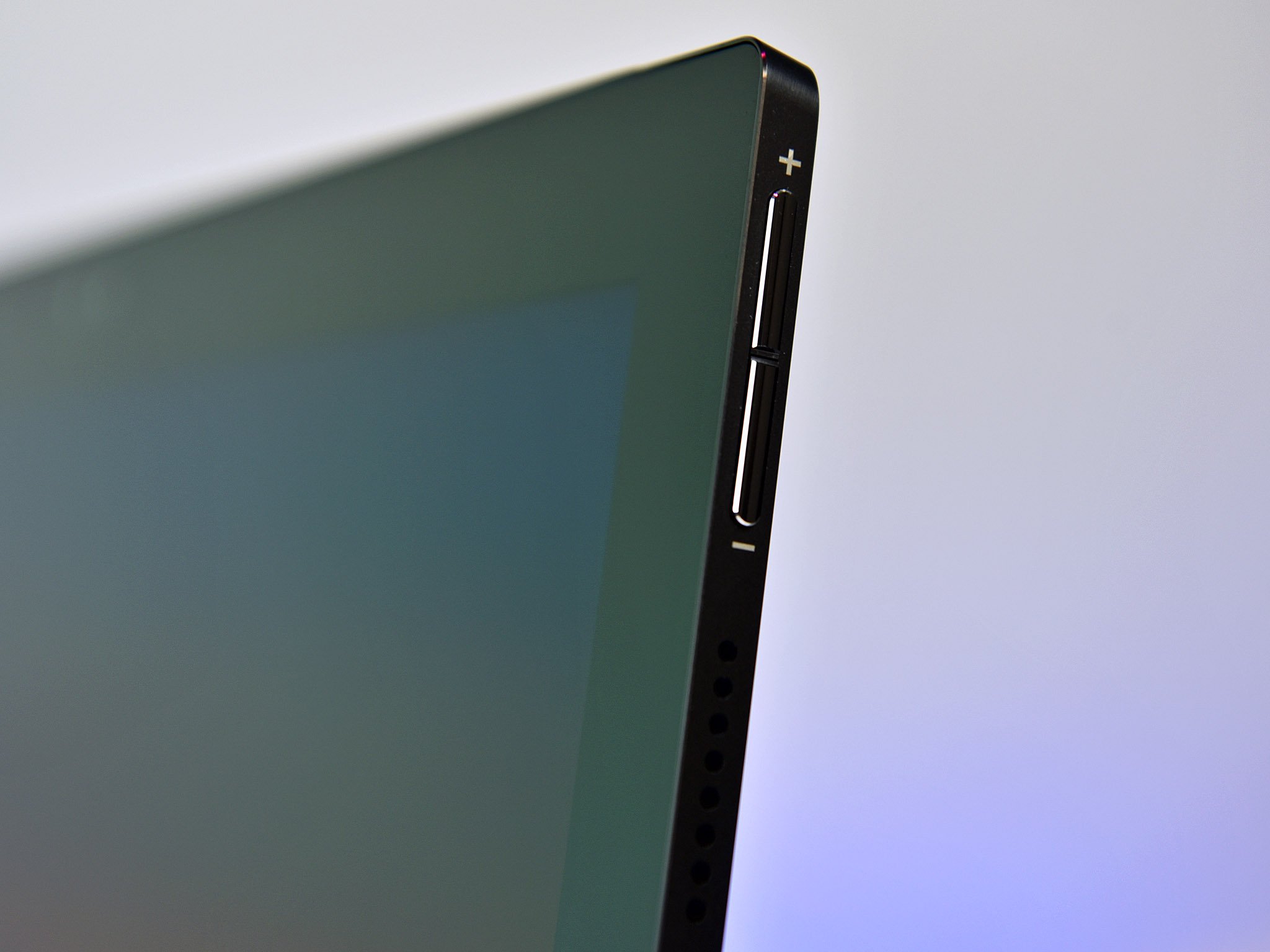
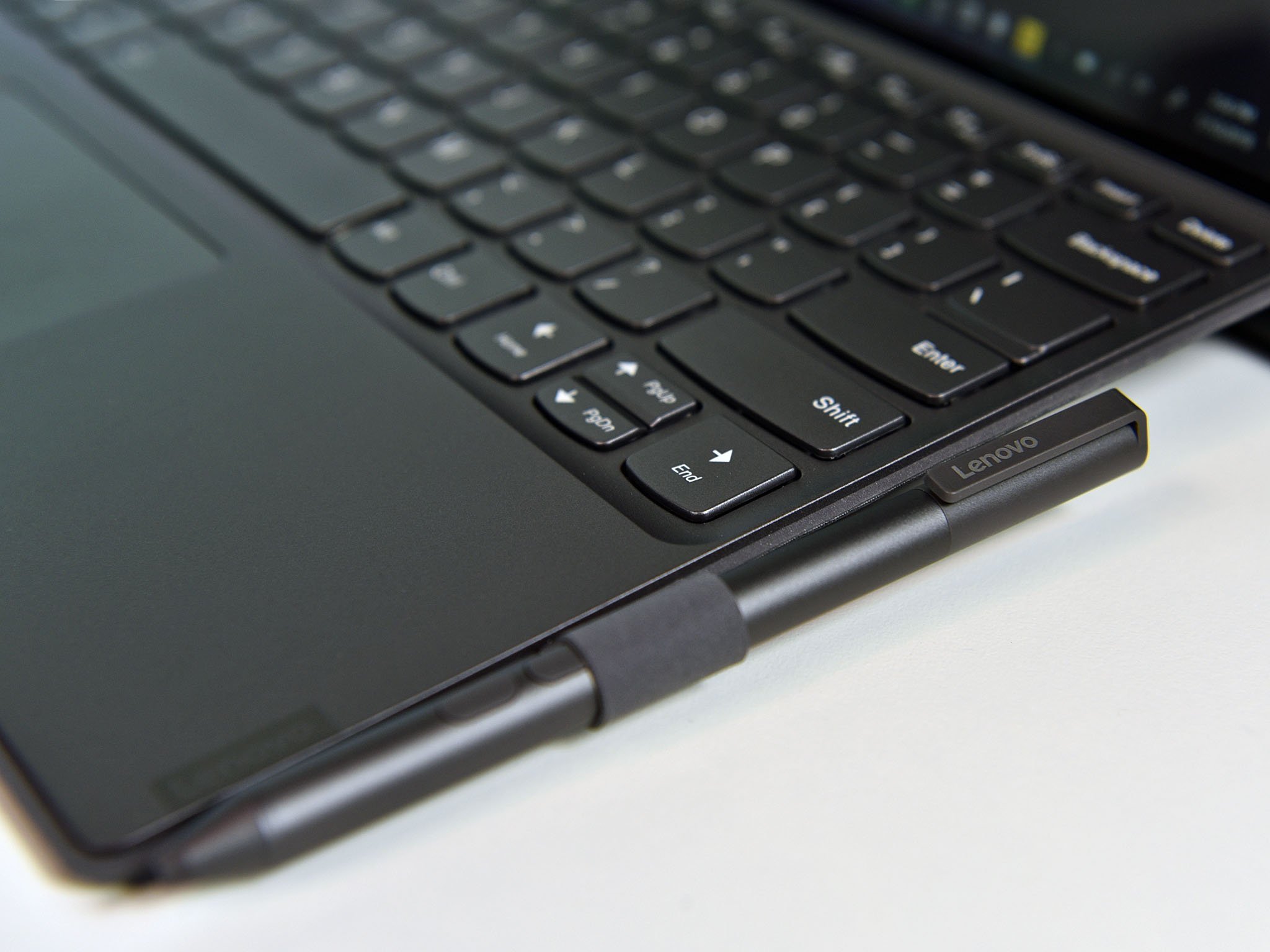
Lenovo opted to put the speakers on the side, and as a result, audio is somewhat diminished versus HP's preferred (and more expensive) "etched in the glass" front-facing speakers. Nonetheless, the Mixx 630's audio is excellent due to the dual 1W speakers.
Typing on the Miix 630 is very good, but I do prefer HP's take better. HP's keyboard is crisper and more accurate where the Miix 630 suffers from a bit of mushiness. It's not bad at all, but when directly comparing to HP's it's clear who is better.
With a Precision trackpad, I have no complaints about cursor movement. The trackpad is taller than HP's, but not as long. It's a great trackpad though.
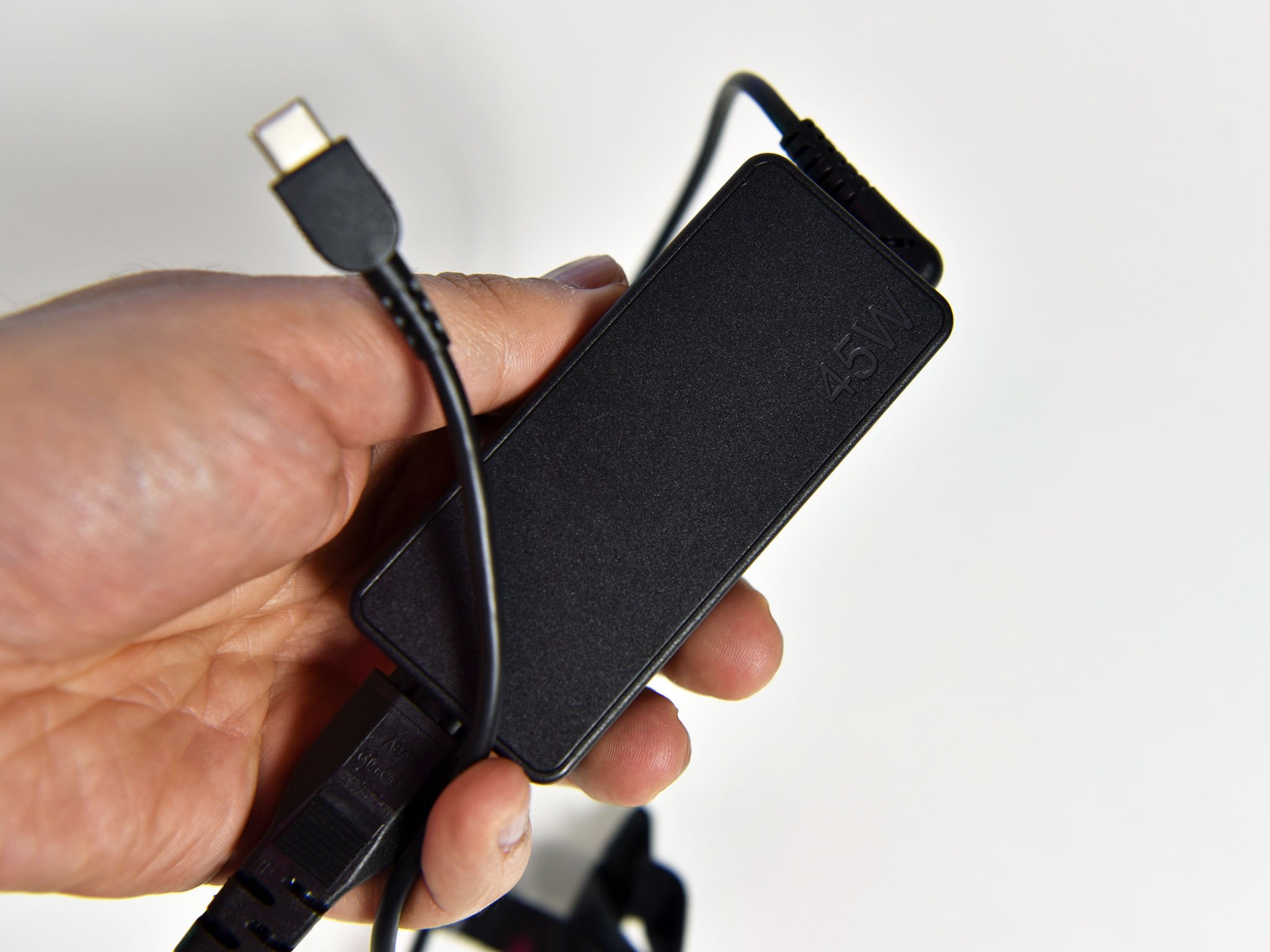
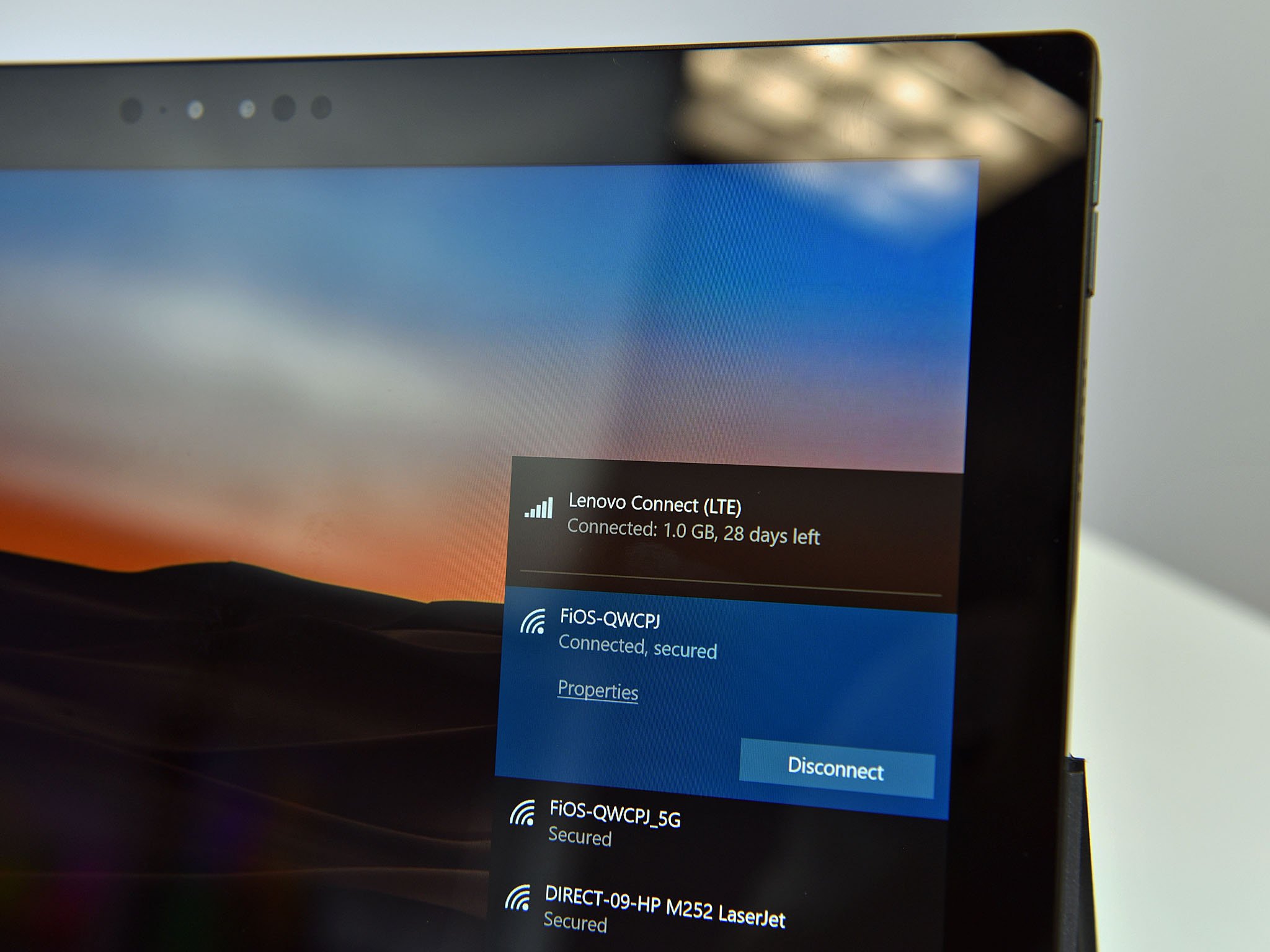
The display is also just smidge better than HP's with some deeper blacks, but that is traded for a more fingerprint-prone finish. Color accuracy, brightness, and stepping of intensity are very good.
Finally, I did appreciate the dual IR camera for Windows Hello which I found more reliable than HP's attempt at using just one.
Lenovo Miix 630 – A solid (and cheaper) ARM option
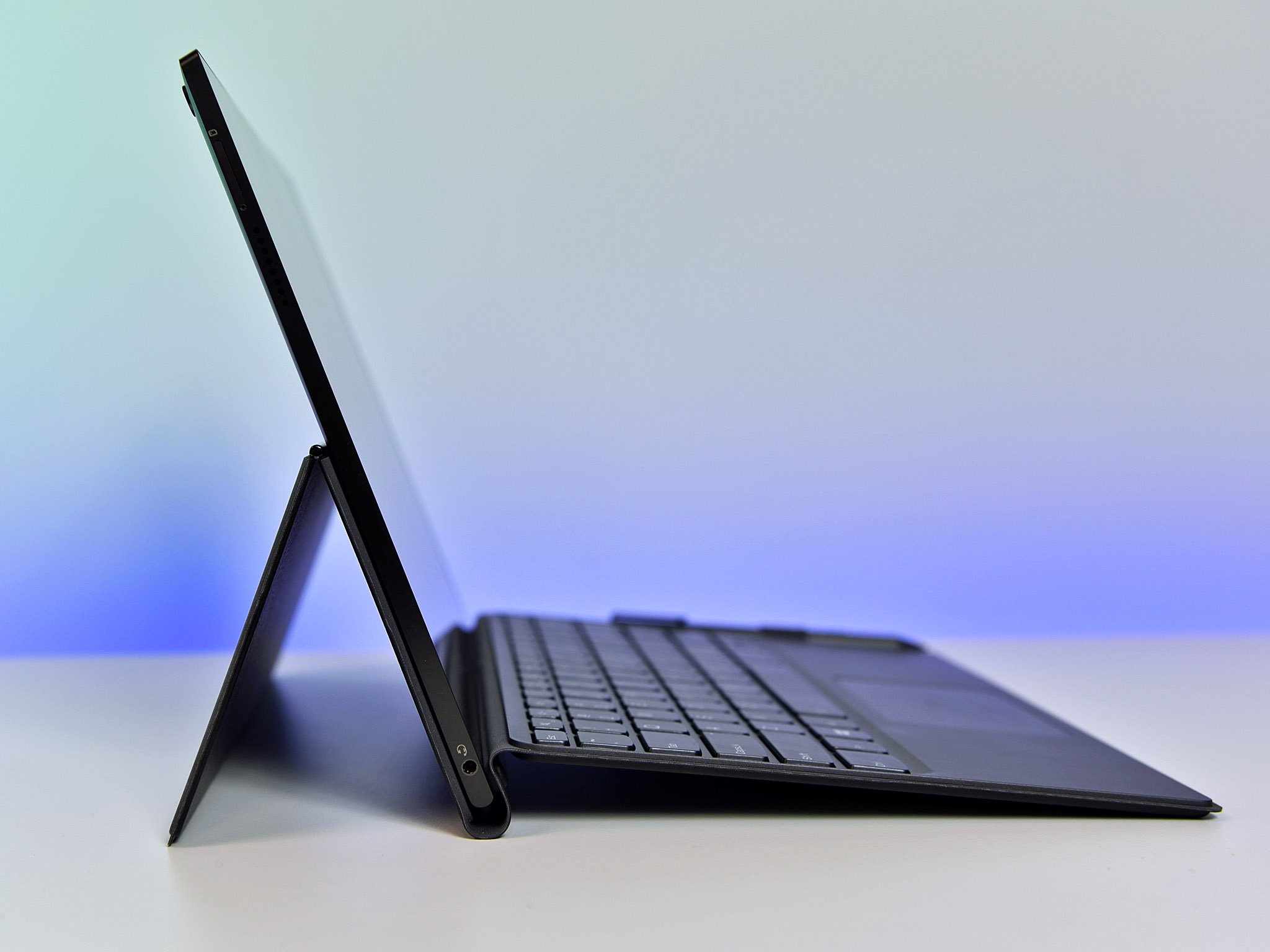
With the Microsoft budget-focused Surface Go on the horizon for release, it is no surprise that Lenovo and HP are cutting prices where they can – this exacerbated by HP and Lenovo competing on what is 95 percent the same device.
I won't hide my thoughts here: this Qualcomm reference design is ace. The keyboard design with the folding hinge, Windows Hello, outstanding audio and battery life that hits around 15 hours easily is awesome. Even the size with its 12.3-inch display is a happy middle ground and much easier to use for longer duration than Microsoft's new 10-inch Surface.
The Microsoft Store is selling the Lenovo Miix 630 for $799 – on sale from $899 – and that's a competitive price for what's included in the box: PC, cover + keyboard, active pen, and LTE. The Surface Go with similar features, and a smaller display is $750 to $780, and that's not including LTE.
Pros:
- Extremely long battery life.
- Outstanding build quality and hardware.
- Instant on, 4G always-connected.
- Cheaper than HP.
Cons:
- Not all Store apps and games run on it (yet).
- Heavier and thicker than Envy x2.
However, there is the issue of the Snapdragon 850 launching later this year. That processor is reportedly up to 30 percent faster than the Snapdragon 835 used here. That makes buying this 2-in-1 a bit of risk.
The Snapdragon 835 is fine for Microsoft Store apps and the instant-on, long battery life, and always-connected LTE are the selling points. That makes the Miix 630 ideal for students, writers, reporters, lawyers, realtors, or anyone who needs a writing/email-first device with some web browsing (tied to Microsoft Edge, of course). That's a limited demographic, but for those who need what the Miix 630 can do that $799 price tag is tempting.

Daniel Rubino is the Editor-in-chief of Windows Central. He is also the head reviewer, podcast co-host, and analyst. He has been covering Microsoft since 2007 when this site was called WMExperts (and later Windows Phone Central). His interests include Windows, laptops, next-gen computing, and wearable tech. He has reviewed laptops for over 10 years and is particularly fond of 2-in-1 convertibles, Arm64 processors, new form factors, and thin-and-light PCs. Before all this tech stuff, he worked on a Ph.D. in linguistics, performed polysomnographs in NYC, and was a motion-picture operator for 17 years.
